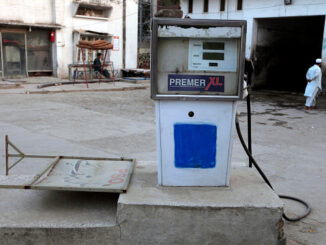
Bhairav Ashtami, also known as Bhairavashtami, Bhairava Jayanti, Kaal-Bhairava Ashtami and Kaal-Bhairava Jayanti, is the holy day of Hinduism that is the day of taking Bhairava, a sinister and angry incarnation of Lord Shiva. This day is celebrated as the birth anniversary of Bhairava. It falls on the fifteenth day (Ashtami) of the Hindu month of Kartik, in the fortnight of the decreasing moon (Krishna Paksha). Bhairav Ashtami falls on a single day in November, December or January. The name Kalashtami is sometimes used to refer to this day, but can also refer to any Ashtami in the Krishna Paksha, all these are the holy days of Bhairava, also known as Dandapani. Lord Bhairav’s vehicle is a dog, that is, Lord Bhairava rides a dog.
Bhairava is the incarnation of Lord Shiva in the form of anger. It can be said that Bhairava is the manifestation of Lord Shiva’s wrath. According to the narrative narrated on this occasion, the trinity gods, Brahma, Vishnu and Shiva were talking in a serious mood about who was the best among them. In this debate, Shiva got a little angry with the comment made by Brahma and instructed his gana Bhairava to cut off one of the five heads of Brahma. Bhairava obeyed Shiva’s command and one head of Brahma was cut off and thus he became the four head. Filled with fear, all the others prayed to Shiva and Bhairava.
ORIGIN OF THE NAME BHAIRAV
Bhairav is derived from the word ‘Bhr’ which means one who bears(holds) the universe by sustaining and nourishing it while the word ‘rav’ means self-awareness. Another meaning implies that He is the patron of those who fear the cycle of suffering, where ‘rava’ stands for intensified awareness which arises within Bhiru’ which means dread or fear of cycle of suffering.
LEGENDS SURROUNDING BHAIRAV
The most popular story of origins of Kaal Bhairav is mentioned in the Shiva Mahapurana. Legends go that once Lord Brahma grew arrogant and during a conversation with Lord Vishnu, stated that He is the Supreme Creator, He has five heads just as Lord Shiva and He can do whatever that Lord Shiva can do and thus He should be worshipped and not Lord Shiva. To crush the ego of Lord Brahma, Lord Shiva took a hair strand of His and threw it on the floor and from that emerged Lord Kaal Bhairav who chopped-off the fifth head of Lord Brahma. Lord Brahma understood His mistake and asked for forgiveness. Lord Kaal Bhairav got cursed with the sin of Brahman-hatya and thus wandered around like a vagabond with the severed fifth head of Lord Brahma until He reached Kashi. There He was absolved of the sin and thus stayed there and became the protective Deity of the city. He is also known as ‘Kotwal of Kashi’.
Another legend goes that once a demon named Dahurasuran had a boon that he could only be killed by a woman. Thus Maa Parvati took the ferocious form of Goddess Kali to kill him. After killing the demon from the wrath and rage of Goddess Kali manifested a child whom Maa Kali fed Her milk. Lord Shiva merged both Goddess Kali and the Child into Himself and through the merged form emerged the Ashtanga Bhairavas (eight Bhairavas). The Ashtanga Bhairavas married the Ashta Matrikas. From these Ashta Bhairavas and Ashta Matrikas, 64 Bhairavas and 64 Yoginis manifested.
One more story about origins of Lord Kaal Bhairav is that when Raja Daksha insulted Lord Shiva, Maa Sati couldn’t bear it and jumped in the fire of Yagna kund. When Lord Shiva came to know about the happenings in rage he took His Kaal Bhairav form and beheaded Raja Daksha. Later Kaal Bhairav became the protective Deity in all Shakti peethas.
The worship of Kaal Bhairav during Bhairav Ashtami in various temples includes observance of all-night vigil (Jagaran), where prayers are offered to Him along with His story being told and an Arti performed at the midnight since it is the best time to worship Him. In the morning bath is taken by the devotees and oblations (Tarpan) are offered to deceased ancestors.
A long fast is also observed by devotees for His divine grace and to absolve all sins. Kaal Bhairav along with Lord Shiva and Goddess Parvati are worshipped with sweet offerings and flowers. His Vahana is the Dog, thus Dogs are also offered respect and food offerings including sweets, milk and curd are served to them.
In the Kal Bhairav Mandir (temple) in Ujjain, liquor and other offerings in symbolic form known as panchakarma are offered to Kaal Bhairav God as five tantric ritual offerings.
The Kaal Bhairav Mandir in Varanasi is the oldest known temple in the holy place. Throughout the year, the body of the Deity idol is covered by a cloth and only the face is revealed. On Bhairav Jayanti, the whole idol is revealed and decorated with garlands.
The renowned Kaal Bhairav Mandir in Kashi, where Kaal Bhairav is revered as the ‘Kotwal of Kashi’ celebrates Bhairav Ashtami with great fervour. The Deity idol is elaborately decorated with garlands and flowers and many devotees visit the temple to participate in the grand celebration. The Kaal Bhairav Astami and Kaal Bhairav Jayanti are also celebrated across the various Jyotirlinga temples in India.
WHAT TO DO ON KALASHTAMI?
– Devotees on this day take early bath in the morning and offer prayers to Lord Shiva. They perform a special puja dedicated to Kaal Bhairav for His blessings and protection.
– In the evening, people also visit the temple of Lord Kala Bhairava and ask for forgiveness.
– On this day, Kalashtami special puja and rituals are also performed for the divine grace of Lord Shiva in His fierce Kaal Bhairava form.
– Devotees also install an idol of Lord Kaal Bhairava in their home for worship.
– They also observe fast throughout the day. Some also stay awake the whole night (jagran or night vigil), reading scriptures and listening to the mantras and stories of Lord Shiva.
– It is the best time to recite the Kaal Bhairav Katha and chant mantras dedicated to Lord Shiva.
– Devotees also feed dogs because Lord Bhairava has a black dog as His divine carrier.
– It is the most auspicious day to feed Brahmins at places like Kashi and Nasik.
– Kalabhairava Pooja vidhi includes Kalash Sthapana, Panchang Sthapana, 64 yogini Pujan, Shetrapal Pujan, Swasti Vachan, Sankalpa, Ganesh Pujan and Abhishek, Navgraha Pujan and 108 Japa of each planetary mantra, Invocation of major Gods and Goddesses in Kalash, Abhishek and Pujan of Bhairav Idol and Yantra, Bhairav Mantra Japa, Homa, Aarti and Pushpanjali.





Be the first to comment